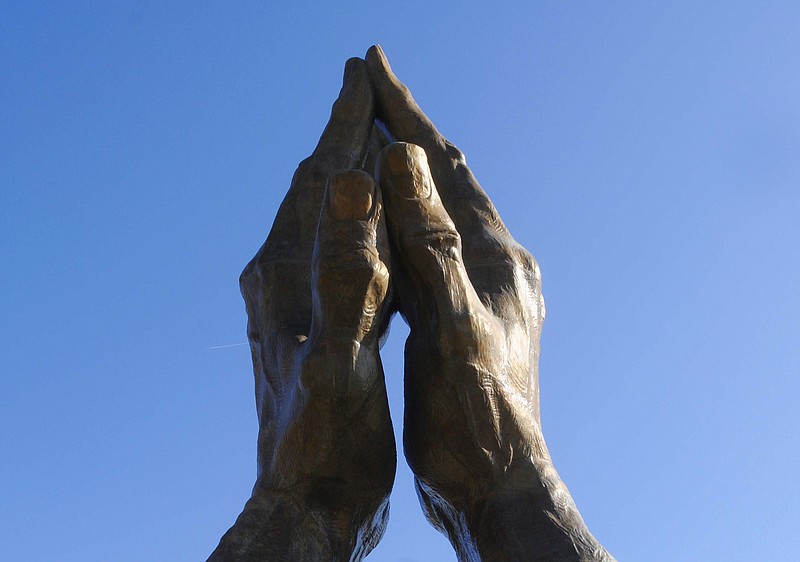More than 10 years ago, then-Sen. Barack Obama shocked many people in an address by telling them the United States was no longer a Christian nation.
That's what people heard, anyway.
What Obama actually said in 2006 - though he stumbled over his prepared text when he did so - was: "Whatever we once were, we are no longer a Christian nation - at least not just. We are also a Jewish nation, a Muslim nation, a Buddhist nation, and a Hindu nation, and a nation of nonbelievers."
When the now-former president delivered his remarks, the United States still was a majority white Christian nation. Eight months after he left office, according to the Public Religion Research Institute (PRRI)'s recently released "America's Changing Religious Identity," it was not.
In 2016, according to the survey, only 43 percent of Americans identify as white and Christian.
That changing identification, Democrats repeatedly said after Obama's 2012 re-election, would sink the Republican Party as a presidential contender for the foreseeable future.
Obviously, it didn't, and the PRRI release provides a few reasons why.
While 18 percent of white evangelical Protestant seniors identify as Democrats, only 10 percent of those under 30 do. While 31 percent of white Catholic seniors are Democrats, only 21 percent of those under 30 are. And, more significantly, while 79 percent of black Protestants and 56 percent of Hispanic Catholic seniors identify as Democrats, only 58 percent and 35 percent, respectively, of those under 30 do.
Similarly, with political ideology, the survey indicates blacks and Hispanics are not as monolithic as Democrats may have assumed. Despite their political identification, more black Protestants consider themselves to be conservative (30 percent) than liberal (29 percent), and more Hispanic Catholics and Hispanic Protestants said they are conservative (33 percent and 41 percent, respectively) than liberal (29 percent and 23 percent, respectively).
For years, Democrats have believed the black and Hispanic vote - especially when religion was attached - was theirs for the taking. The survey identification and political ideology, instead, indicate an independence of thought and discernment, especially among younger religious voters in those demographics.
If the survey is to be believed, it also holds a political surprise with the status of religiously unaffiliated Americans, who are categorized as atheist (14 percent), agnostic (13 percent), secular (58 percent) or religious (13 percent).
Since the largest faith group in the Democratic Party is unaffiliated with any religion, according to PRRI, it might stand to reason that most unaffiliated Americans are Democrats. But the number of unaffiliated Americans has grown so much - now 24 percent of the U.S. population - that while 33 percent identify as Democrats, 47 percent identify as independents.
And voters who claim to be independents voted 50 percent to 45 percent for Republican Mitt Romney over Obama in 2012 and 48 percent to 42 percent for President Donald Trump over Hillary Clinton in 2016.
The survey also indicates the religious coalition in the Democratic Party has changed more between 2006 and 2016 than that of the Republican Party.
In 2006, the largest religious groups among Democrats were black Protestants (18 percent), white evangelical Protestants (17 percent), and white mainline Protestants and white Catholics (16 percent each). In 2016, they were unaffiliated (26 percent), black Protestants (17 percent), white mainline Protestants (11 percent), and white Catholics and Hispanic Catholics (10 percent each).
For Republicans, in 2006, the largest religious groups were white evangelical Protestants (37 percent), white mainline Protestants (22 percent) and white Catholics (20 percent). In 2016, the same three groups prevailed. White evangelical Protestants fell to 35 percent, white mainline Protestants decreased to 18 percent, and white Catholics dropped to 16 percent.
Where it was feasible for Democrat Jimmy Carter in 1976, when 81 percent of Americans identified as white and Christian, and Republican Ronald Reagan in 1980 to appeal heavily to religious groups for their core support, it is less so today. And even those religious groups, especially among the young and non-white, once a lock for their votes, can't always be counted on.
Although both parties hemorrhaged religiously affiliated voters over the last 10 years, the GOP more tightly hung onto its core constituencies. That doesn't necessarily mean a long run for Republicans. It just means the rumors of their demise have been greatly exaggerated.
